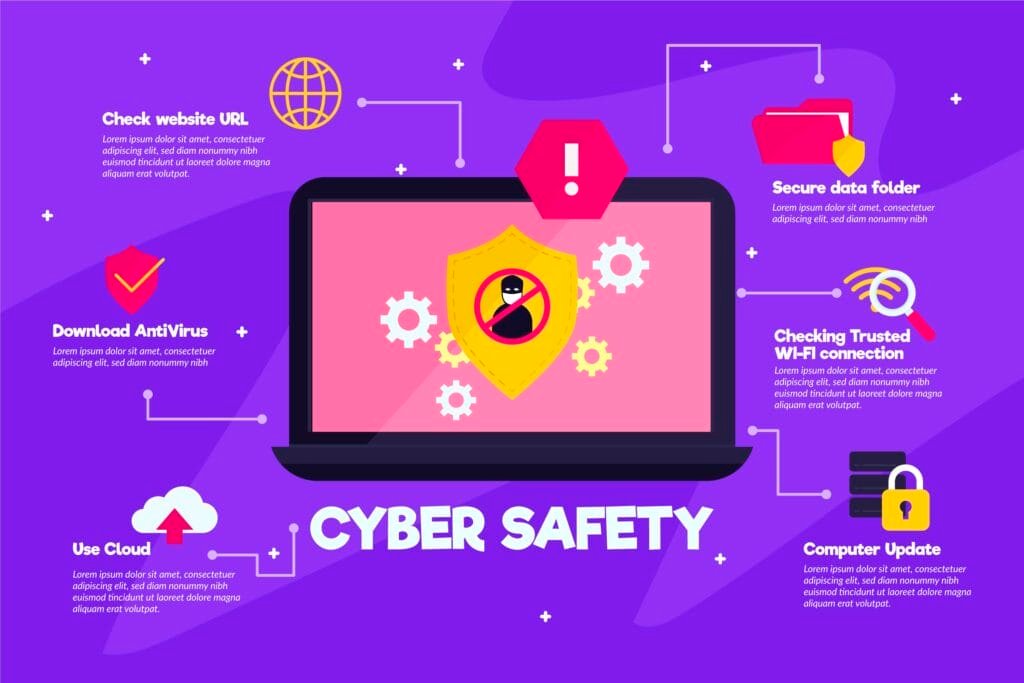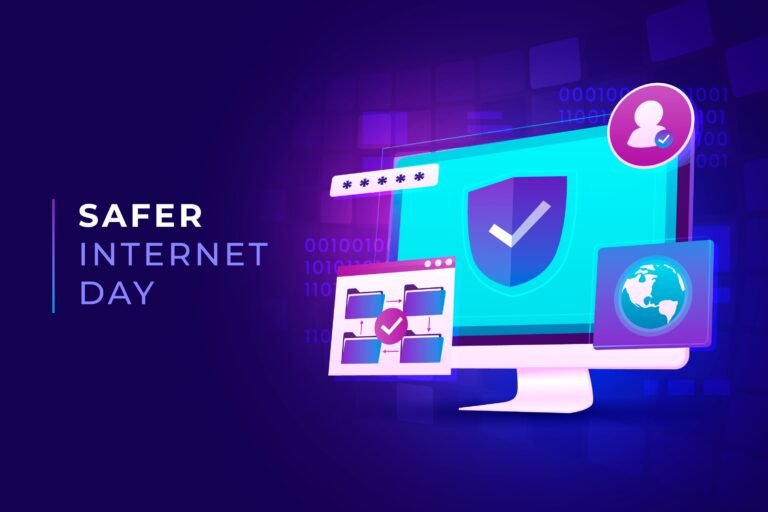Cybersecurity Program Development for Business- The Essential Planning Guide
Introduction
In the current digital era, cybersecurity is crucial for companies. Organizations must create and implement a strong cybersecurity program due to the rising frequency and complexity of cyber threats. Business executives may use this guide as a vital resource to learn the principles of developing cybersecurity programs and make well-informed decisions to protect their companies.
Understanding Risk
Comprehending risk is crucial before delving into the complexities of cybersecurity program creation. In the context of cybersecurity, risk is the possibility of suffering damage or losing money as a result of a data breach or cyberattack. It is essential to comprehend the several kinds of risks, including reputational, financial, and legal threats, to create a cybersecurity program that works.
Business executives must recognize and evaluate the possible risks and weaknesses that their companies may encounter to minimize risk properly. In order to do this, a thorough risk assessment must be carried out, which includes determining the worth of assets, spotting potential threats, and analyzing IT system vulnerabilities within the company.
Everything You Always Wanted to Know About Tech
Business executives must be familiar with the fundamentals of cybersecurity language and technology in an ever-changing technological ecosystem. To help executives effectively engage with their IT teams and make informed cybersecurity decisions, this section offers a primer on a variety of IT subjects, from network security to encryption.
A Cybersecurity Primer

This chapter offers a thorough review of cybersecurity procedures and concepts, building on the material covered in the previous part. It covers subjects including typical cybersecurity frameworks, the CIA trinity (Confidentiality, Integrity, Availability), and the function of governance and compliance in the creation of cybersecurity programs.
Management, Governance, and Alignment
A cybersecurity program’s development needs efficient administration and oversight. The significance of coordinating cybersecurity with corporate goals and tactics is discussed in this section. It covers a wide range of subjects, including developing rules and procedures, guaranteeing regulatory compliance, and building a cybersecurity governance framework.
Your Cybersecurity Program: A High-Level Overview
After laying the groundwork, the cybersecurity program has to have a high-level overview developed. A detailed program development process is outlined in this part, along with methods for creating risk management frameworks, defining program goals and objectives, and integrating cybersecurity with business operations.
Assets
Comprehending the resources of the company is essential to creating a cybersecurity program that works. The various asset classes that require security are examined in this section, including data, hardware, software, and intellectual property. It also covers the significance of classifying and inventorying assets and putting access controls in place to protect them.
Threats
Cyber threats are a common occurrence for enterprises in today’s interconnected world. This section explores the several kinds of threats that are common in this field, such as social engineering, phishing scams, and malware. Furthermore, it clarifies new dangers like ransomware and advanced persistent threats (APTs) and offers advice on how to successfully mitigate them.
Technology has led to an evolution in cyber dangers, therefore protecting against them now requires a proactive strategy. Phishing schemes pose a serious concern because they take advantage of people’s vulnerabilities, while malware, which is well-known for its destructive potential, is still a common hazard. Social engineering techniques raise the stakes by tricking people into disclosing private information. In the meantime, the rise in sophistication of cyberattacks is indicated by the appearance of ransomware and APTs.
For businesses looking at improving their defenses, understanding these dangers is essential. Implementing modern technologies for threat detection and prevention, employee training to identify and foil such attacks, and strong cybersecurity protections are all part of the strategies to lower these risks. Through proactive steps and keeping up with evolving cyber risks, organizations can strengthen their defenses against the wide range of cyber threats that are common in today’s world.
Vulnerabilities

Finding weak points in an organization’s systems is essential to creating a strong cybersecurity program. Common vulnerabilities including out-of-date software, incorrectly configured systems, and weak passwords are covered in this section. To reduce these risks, it also offers instructions on how to carry out vulnerability assessments and apply patches and upgrades.
Environments
Businesses operate in a variety of settings, such as cloud, on-premises, and hybrid settings. There are particular cybersecurity challenges in every area. This section looks at security considerations in various scenarios and offers advice on how to secure cloud-based systems and safeguard private information while it’s being transferred.
Controls
reducing cybersecurity threats requires the implementation of appropriate controls. Different control mechanisms, such as preventative, detective, and remedial controls, are covered in this section. It also discusses the significance of incident response plans and user awareness training as essential elements of a thorough cybersecurity program.
Incident Response Planning
Cyber mishaps can happen to any organization. The importance of incident response planning is emphasized in this section, along with tips for creating a successful plan. It addresses things like creating an incident response team, outlining roles and duties, and analyzing the aftermath of an event to better prepare for reactions in the future.
People
Humans are essential to cybersecurity. The human element in cybersecurity is examined in this section, which covers subjects including managing third-party risks, creating a cybersecurity culture, and training and educating employees. It emphasizes how crucial it is to develop a security-aware workforce and make sure staff members are prepared to recognize and report possible security incidents.
Living Cybersecure!

Cybersecurity is a process that needs to be continuously monitored, assessed, and improved. The significance of routinely assessing and upgrading the cybersecurity program to adjust to changing threats and technologies is emphasized in this section. Additionally, it offers insights on new trends and cybersecurity best practices that can assist businesses in staying ahead of possible threats.
Conclusion
In conclusion, for businesses to safeguard their priceless assets and reduce cyber threats, a strong cybersecurity program is a must. For company executives, this guide offers a thorough understanding of the essential components involved in developing cybersecurity programs. Organizations can secure their digital assets and guarantee business continuity in an increasingly linked world by comprehending the risks, matching cybersecurity with business objectives, and putting in place efficient controls.
Recall that maintaining cybersecurity requires constant effort rather than a one-time effort. Organizations may preserve what matters most and keep ahead of possible dangers by remaining proactive, adaptable, and aware.
Further Details: Businesses must give cybersecurity a top priority and set aside enough funds to create and run an extensive program. In addition to being a wise financial move, investing in cybersecurity is also essential to safeguarding the company’s long-term viability, clientele, and reputation.
FAQ
How do I start implementing a cybersecurity program for my business?
Begin by conducting a comprehensive risk assessment to identify vulnerabilities, followed by drafting a tailored cybersecurity strategy aligned with your business needs.
What are the primary challenges businesses face in cybersecurity development?
Businesses often struggle with budget constraints, evolving threats, and maintaining up-to-date security measures amid technological advancements.
Why is employee training crucial in cybersecurity programs?
Employees are often the first line of defense. Proper training enhances their awareness, reducing the risk of falling victim to cyber threats like phishing attacks.
What should be included in an incident response plan?
An incident response plan should outline roles and responsibilities, steps for immediate containment, data recovery protocols, and strategies for communicating the incident.
How often should a cybersecurity program be evaluated and updated?
Regular evaluations, at least annually, are recommended. However, updates should be made promptly following significant technological changes or security incidents.
Which cybersecurity solutions are most suitable for small businesses?
For smaller businesses, cost-effective solutions like endpoint protection, password managers, and employee training platforms are highly recommended.








4 Comments